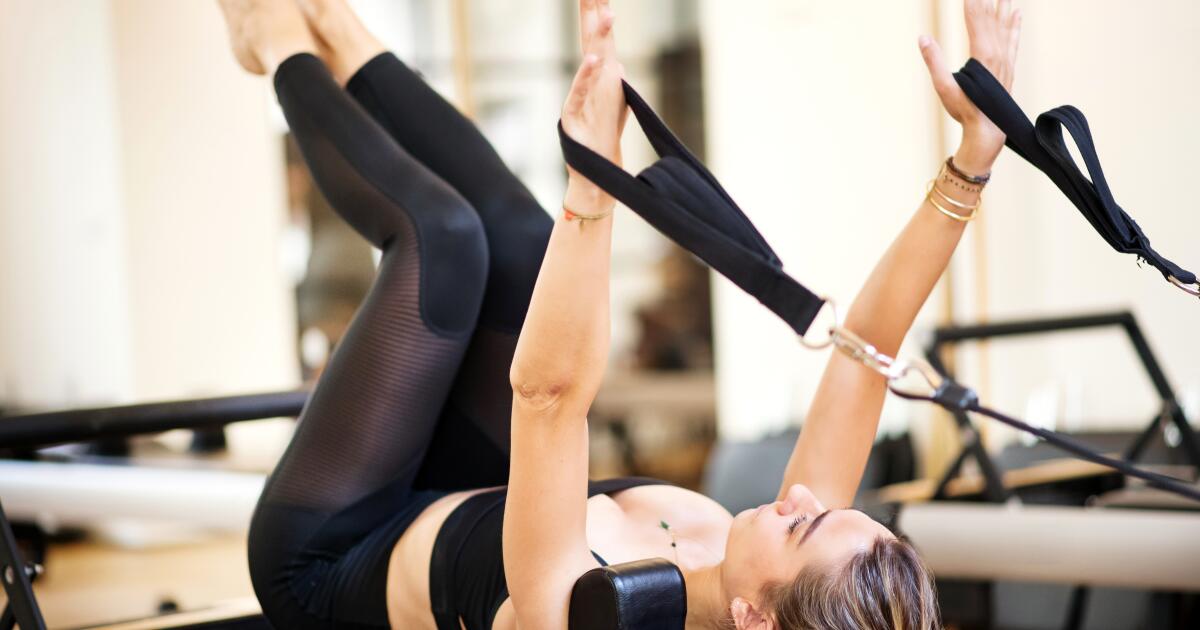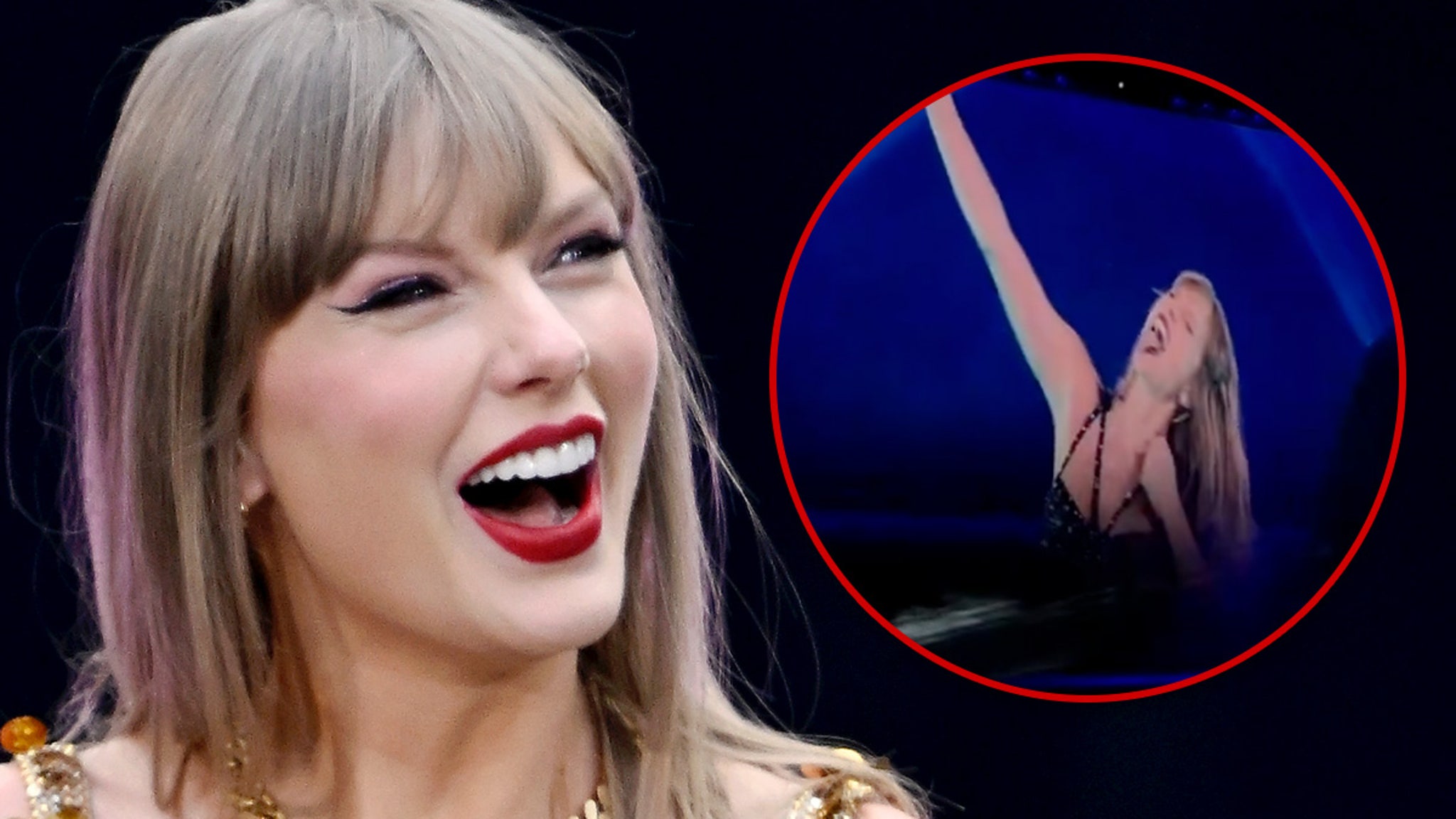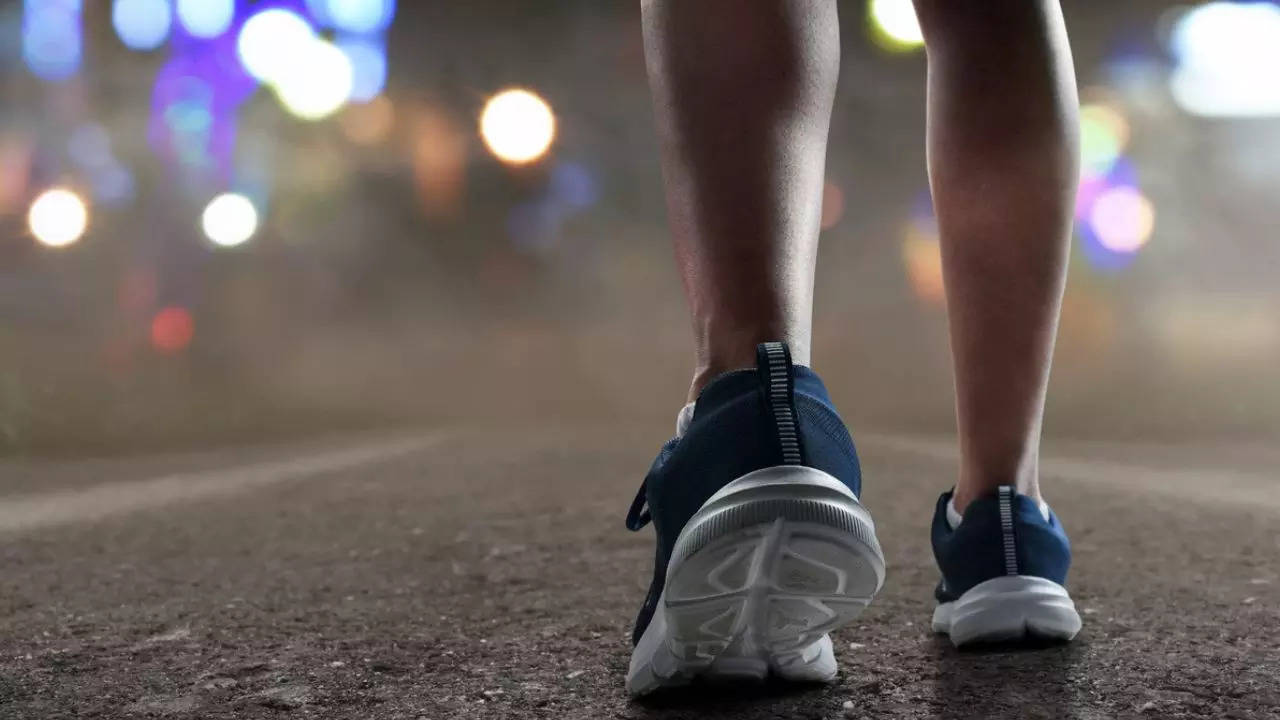Lifestyle
Column: After years of running, I quit and took up Pilates. Here's how that turned out

About a year and a half ago, it occurred to me that if I didn’t start working out again, I’d be sliding into a sloppy, flabby late middle age.
I had always been a runner. For more than 30 years, my workout partner and I ran regularly along the oceanfront, from Venice to Santa Monica. Rain or shine, through pregnancies, child-rearing, PTAs, marital conflict and all the things that Zorba the Greek once described as “the full catastrophe,” we talked as we ran, becoming each other’s best therapist.
And then, sometime before the COVID-19 pandemic, my partner discovered a hot new form of exercise. Our running life as we knew it was basically over as I effectively became a pickleball widow.
In 2020, when the pandemic forced us inside, I pretty much stopped running.
Around the same time, my left knee began to ache and swell. I was certain it was a result of my rambunctious golden retriever smashing into my legs. But no, said the doctor, it was arthritis. (Me? So young?)
She referred me to physical therapy. The physical therapy office never returned my calls.
Desperate (and chubby), I decided to try Pilates. Why? Because all the women streaming in and out of the nearby Pilates studio had the kind of bodies I dreamed of having. And my knee was killing me.
My first, 45-minute Pilates class was a disaster. I was lost when the instructor called out the various positions — dancing bear, French twist, reverse kneeling crunch. I sat on the Megaformer machine, panting and feeling defeated.
“Why don’t you try a few private classes until you get the hang of it?” the studio owner suggested after I complained that she didn’t offer classes for rank beginners like me.
Over the course of the next year, I spent enough money on private lessons to buy a used car. In fact, I was spending so much that I was actually relieved when my cherished instructor told me she was moving to Amsterdam.
With trepidation, I began taking group classes again. This time, it was different. I knew what to do (mostly) and could keep up (mostly).
“Booty, booty, booty,” my class instructor, DeNae D’Auria, calls out as we, on all fours, donkey kick with a bungee cord over one foot to increase resistance.
“We don’t talk about pelvic floor stability enough,” says D’Auria, who is trained in Lagree, which expands on the core concepts of Pilates but is more intense.
“Love to see those shaky shakes,” she says, our muscles trembling as we do squats, lunges and planks enough to fill a lumber yard. “Remember to slow down and breathe. The secret is time under tension.”
I first encountered a Pilates machine almost 25 years ago at the home of the iconic hairdresser Vidal Sassoon, whom I was profiling for The Times. It seemed eccentric, but he looked fantastic for a man of 71.
Pilates classes are dominated by women, but the exercise was used to treat wounded and disabled soldiers soon after it was developed by Joseph Pilates, a German bodybuilder and gymnast who was interned by the British on the Isle of Man during World War I. He improvised the first versions of his famous machines by attaching bed springs to headboards and footboards to create resistance.
He called his system of exercise “Contrology,” focusing on breathing, the postural muscles of the back and the abdominal muscles we think of as the “core.”
After decades as a “little-known form of exercise with a devout but small following that included dancers, singers, circus performers and actors,” Pilates exploded in the mid- to late 1990s, according to the authors of the 2011 book “Pilates Anatomy.” Celebrities such as Madonna and Uma Thurman touted its benefits.
“It suddenly started appearing in Hollywood movies and television commercials, in cartoons and comedy shows, and on late-night television,” wrote Rael Isacowitz and Karen Clippinger. “It became synonymous with going to Starbucks and indulging in a low-fat triple-shot soy latte (no whipped cream, please!).”
The Pilates Foundation estimates that some 12 million people worldwide practice the exercise regimen. That’s a tiny fraction of the estimated 300 million or so who practice yoga.
“Scientific research does support an array of impressive health benefits for Pilates,” the New York Times reported in 2022. “Studies suggest it may help to improve muscle endurance and flexibility, reduce chronic pain and lessen anxiety and depression.”
Pilates’ place in popular culture was solidified in April, when “Saturday Night Live” took it on in a sketch that mocked the love-hate relationship it inspires in practitioners.
“Pilates,” says a deep-voiced narrator. “From the creator of ‘Saw X’ and the marketing director for Alo comes a chilling new look at girl horror.”
For people like me who came of age during the insane era of high-impact aerobics — thanks for the sciatica, Jane Fonda! — the low-impact nature of Pilates is appealing.
I usually do four 45-minute classes a week. I wouldn’t say I look like those lithe young women who surround me there — most are so young that I could be their mother — but a taut core has developed beneath my midriff bulge.
Oh, and that awful knee pain? It’s been gone for months.

Lifestyle
'Wait Wait' for June 29, 2024: With Not My Job guest Christian Mcbride

Christian McBride performs at An Evening With Christian McBride at the GRAMMY Museum on February 13, 2020 in Los Angeles, California.
Rebecca Sapp/Getty Images for The Recording A/Getty Images North America
hide caption
toggle caption
Rebecca Sapp/Getty Images for The Recording A/Getty Images North America
This week’s show was recorded at the Mann Center in Philly with host Peter Sagal, judge and scorekeeper Bill Kurtis, Not My Job guest Christian McBride and panelists Dulcé Sloan, Joyelle Nicole Johnson, and Peter Grosz. Click the audio link above to hear the whole show.
Who’s Bill This Time
Presidential Hoarse Race; A Change for The Change; A New Way to Be Bored on Board
Panel Questions
Stuck In Space
Bluff The Listener
Our panelists tell three stories of unique lawsuits, only one of which is true.
Not My Job: We quiz Jazz bass legend Christian McBride on Bass Pro Shops
Jazz bassist Christian McBride plays our game called “Bass Pro? Meet Bass Pro!” Three questions about Bass Pro Shops.
Panel Questions
Running for Love; The Greater Outdoors
Limericks
Bill Kurtis reads three news-related limericks: Taylor Swift Side Effects; Furry Caddies; An Adorably Repugnant Pup
Lightning Fill In The Blank
All the news we couldn’t fit anywhere else
Predictions
Our panelists predict, after rawdogging flights, what will be the next weird thing people will do on planes.
Lifestyle
Taylor Swift Continues to Show Her Love To Travis Kelce While Onstage

Taylor Swift is head over heals in love with Travis Kelce – and she continues to show it while performing onstage.
The pop star’s latest shout out to her boyfriend came Friday as she cranked out her famous tune, “Midnight Rain,” at Aviva Stadium in Dublin, Ireland.
Check out the brief video … Taylor was singing and pointing at the sold-out crowd before striking Travis’ famous pose mimicking an archer when he plays tight end for the Kansas City Chiefs.
This was the second time in recent memory Taylor did Travis’ move onstage in front of a live audience – and it seemed to go over well.
SHUT UP THE ARCHER POSE pic.twitter.com/IL601s0yrw
— Taylor Throwbacks (@ThrowbackTaylor) June 21, 2024
@ThrowbackTaylor
The first time she did it was at her concert last weekend at Wembley Stadium in London. Taylor imitated the archer pose while belting out her hit, “So High School.”
Meanwhile, Taylor and Travis are in a very serious relationship. The couple started dating last summer, going public in September — and their romance has been going strong ever since.
Lifestyle
A robot gets a face of living ‘skin’ that allows it to smile

An image released by University of Tokyo researchers shows a robot smiling, with the help of mechanical actuators beneath a flexible layer of living skin.
Takeuchi et al. CC-BY-ND
hide caption
toggle caption
Takeuchi et al. CC-BY-ND
If humanoid robots make you a bit queasy — would it help if they had fleshy faces that can smile at you?
The uncanny feat is the result of new technology using engineered living skin tissue and human-like ligaments to give robots a more natural smile, according to Tokyo University researchers who unveiled their work this week.

“In this study, we managed to replicate human appearance to some extent by creating a face with the same surface material and structure as humans,” professor Shoji Takeuchi, the team leader, said in a news release. In the process, he added, “we identified new challenges, such as the necessity for surface wrinkles and a thicker epidermis to achieve a more humanlike appearance.”
The approach promises to make robots more lifelike — and in the future, the researchers say, similar techniques could also be used on humans, in the cosmetics and plastic surgery industries. Their findings were published in the journal Cell Reports Physical Science.

A new method of binding living skin tissue to a robotic skeleton will allow more humanlike expressions and better range of motion, according to researchers from the University of Tokyo.
Takeuchi et al. CC-BY-ND
hide caption
toggle caption
Takeuchi et al. CC-BY-ND
To overlay and connect the lab-produced skin on a robotic skeleton, a layer of collagen gel containing cultured human dermal fibroblasts (a type of connective tissue cell) binds to an innovative system of tiny V-shaped perforations in the surface, letting the skin move with the underlying structure without tearing or peeling. The work of muscles — creating a smile, and other motions — is done by actuators.
Takeuchi’s Biohybrid Systems Laboratory has previously engineered skin that can heal, created small robots with biological muscle tissue, and 3D printed lab-grown meat. He says the latest work on living skin has a string of potential next steps.
“Self-healing is a big deal — some chemical-based materials can be made to heal themselves, but they require triggers such as heat, pressure or other signals, and they also do not proliferate like cells,” he said. “Biological skin repairs minor lacerations as ours does, and nerves and other skin organs can be added for use in sensing and so on.”

It’s critical for robots to have the ability to heal and self-repair, the researchers said in their study, because even small scratches could develop into serious impairments.
Biomimetic robots could also become even more realistic with thicker skin, Takeuchi said, adding that future projects could look to add sensors, pores and even sweat glands and fat. The team’s paper says their work could also bring insights into how humans’ wrinkles are formed. And by incorporating more sophisticated actuators and eventually, cultured muscle tissue, their approach could help robots in the future move in fluid, humanlike ways.
For now, the robot can’t feel its face, putting it in a category pioneered by Abel Tesfaye, a.k.a. The Weeknd. Not long ago, many of us smiled when technology managed to put the singer’s words about his face into the mouth of a U.S. president.
-

 News1 week ago
News1 week agoTracking a Single Day at the National Domestic Violence Hotline
-

 Fitness1 week ago
Fitness1 week agoWhat's the Least Amount of Exercise I Can Get Away With?
-

 News1 week ago
News1 week agoSupreme Court upholds law barring domestic abusers from owning guns in major Second Amendment ruling | CNN Politics
-

 Politics1 week ago
Politics1 week agoTrump classified docs judge to weigh alleged 'unlawful' appointment of Special Counsel Jack Smith
-

 Politics1 week ago
Politics1 week agoSupreme Court upholds federal gun ban for those under domestic violence restraining orders
-

 World5 days ago
World5 days agoIsrael accepts bilateral meeting with EU, but with conditions
-

 News1 week ago
News1 week agoLouisiana becomes first state to require that Ten Commandments be displayed in public classrooms
-

 World6 days ago
World6 days agoNew Caledonia independence activists sent to France for detention
















